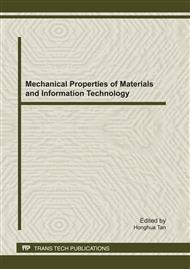p.167
p.173
p.177
p.181
p.187
p.192
p.197
p.202
p.209
Comparative Analysis and Assessment on Oxidation Resistance of Proanthocyanidin Extract from Sanguisorba Root
Abstract:
We introduced the oxidation method of Lecithin liposome which induced by Fe2+ and fluorescence chemiluminescence method. The method used to determine the ability of the proanthocyanidin extracted from Sanguisorba of inhibit liposome peroxidation, scavenge superoxide anion(O2-.) and hydroxyl free radical(·OH). We carried out a comparative analysis with rutin, extract of Grape Seed and vitamin E (VE) in antioxidant ability. As revealed in the results, compared the extract of Grape Seeds and VE, the inhibition ratio of proanthocyanidin extracted from Sanguisorba to inhibit liposome peroxidation is 1.62 and 7 times, scavenge superoxide anion (02-.) is 1.6 and 10.15 times and scavenge hydroxyl free radical(.OH)is 1.9 and 29.5 times, respectively. The results demonstrate that proanthocyanidin extracted from Sanguisorba show better antioxidant ability, which further revealed that resource of sanguisorba is more worth exploiting and applying.
Info:
Periodical:
Pages:
187-191
Citation:
Online since:
September 2011
Authors:
Price:
Сopyright:
© 2012 Trans Tech Publications Ltd. All Rights Reserved
Share:
Citation:


